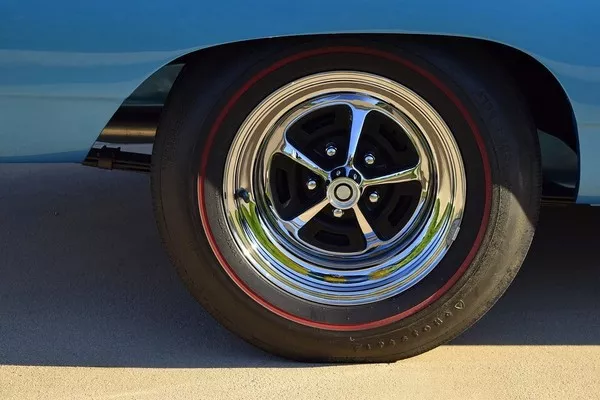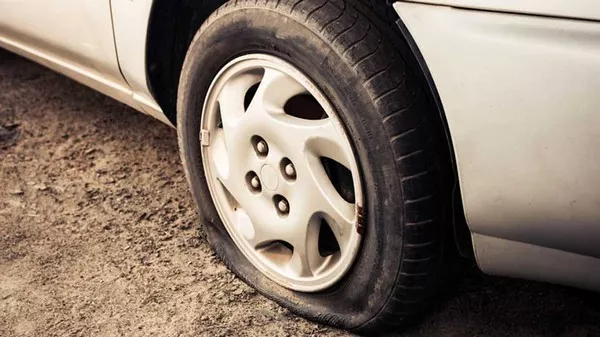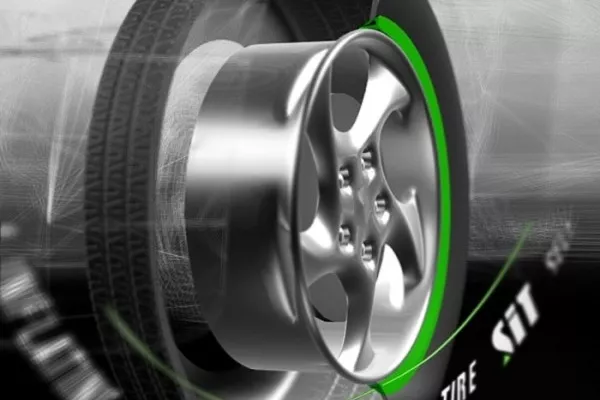Despite having different sizes, tread patterns, and designs, the car tires are generally divided into three main groups: tubeless tires, run-flat tires, and self-inflating tires. Let's follow Philkotse.com to take a look at the advantages and disadvantages of each type of tire:
1. Advantages and disadvantages of tires without the pneumatic tube
Tubeless tires are the type that could hold air inside without the inclusion of a pneumatic tube. The interior surface of the tire will be coated with halobutyl or chlorobutyl membrane to make the joints between the tire and the wheel air-tight, preventing air leakage.
The advantage of tires without a tube inside is that they are safer than the tube tires. For traditional tube tires, when traveling at high speeds, the tire temperature rises rapidly, thereby increasing the pressure in the tire. So, in this condition, the tire is very vulnerable, especially if there are sharp objects piercing through it, which can make the tire explode like a balloon.
According to experienced experts in cars, the tube is only capable of holding air, so a high outflow of air will create great pressure on the tires, making it likely to be torn. This can make the driver lose the control; and when running at high speeds, the car is at risk of serious accidents.

Tubeless tires are the type that could hold air inside without the inclusion of a pneumatic tube
In contrast, tires without a tube inside have the ability to hold the air better. If an object pierces through the tire, the air will slowly escape through the hole in the tire. Therefore, tubeless tires are rated as being safer. In addition to the ability to hold air by itself, tubeless tires are also more capable of heat dissipation, especially when accompanied with metal wheels. One advantage of a tubeless tire is that in case it is punctured by nails or sharp objects, it can run for a few days without significant loss of tire pressure compared to ordinary tires.
A tubeless tire is on average 500 grams lighter than a tube tire. It partly helps cars to save fuel, while improving the driving experience. For adventurous drivers, tubeless tires also offer the advantage of being easy to drive on rugged roads with low tire pressure without having to worry about damaging the tube inside.
In terms of maintenance, tubeless tires require only one type of sealant to stop the leak, so it is quite time-saving. However, the price of this type of tire is not cheap.
2. Advantages of run-flat tires
Run-flat tires were introduced in 1982 when the first patent was officially granted, and Goodyear was the world's first manufacturer of run-flat tires in 1978. Run-flat tires allowed the car to continue to move even when the tire pressure is depleted, but only for a certain distance. Depending on the manufacturer, the car can run an extra 160km or even 320km. However, drivers must reduce their speed to less than 90km/h.
At present, there is quite a mixed opinion about run-flat tires. Some users believe that run-flat tires are very useful because they ensure safety for the car for hours after the tire is deflated. Meanwhile, many consider it a waste of money and time.

Run-flat tires allowed the car to continue to move even when the tire pressure is depleted
The drawback of the run-flat tire is its heavier weight, which limits the speed, consumes more fuel and reduces the braking performance in certain situations. However, thanks to some new technological improvements, run-flat tires have gradually resolved these concerns.
Finally, it is the economic problem. According to car care and maintenance experts, high cost, expensive repairs, and replacements are major downsides of run-flat tires. Therefore, this type of tire is usually equipped on armored vehicles carrying heads of state to prevent attacks.
>>> Read more: How to prevent a flat tire - 7 handy tips for Pinoy drivers
3. Advantages of self-inflatable tires
Self-Inflating Tire (SIT) designed and manufactured by Coda Development of the Czech Republic had won the "Tire Technology of the Year" award at Tire Technology Awards for Innovation and Excellence in Hamburg, Germany in 2009.
The advantage of this new car technology is that it continuously maintains optimum tire pressure, which saves fuel as well as prolongs tire lifespan and reduces the risk of accidents. According to calculations by Coda Development, by moving only 1.6 km, the car can inflate the tire with the amount of air equivalent to that leaked out in several months (average 1- 3 months). In addition, maintaining tire pressure will save about 1.24 billion gallons of fuel per year (in the US alone) and can extend the lifespan of some 4.5 million tires.

Saving fuel as well as prolongs tire lifespan and reduces the risk of accidents
>>> Click to get more helpful tips and advice for all car owners
Recent posts
- Early Warning Device for cars: Must-have safety tool for every Pinoy driver Aug 18, 2023
- 5 common car tire myths that have finally been debunked Oct 25, 2021
- Car Tire Pressure Facts for a Safe Driving Experience Aug 04, 2020
- Tips every Pinoy car owner should know to choose the right used car tires Jul 10, 2018
- [Tire safety tips] How to prolong the lifespan of the tire? Apr 21, 2020











